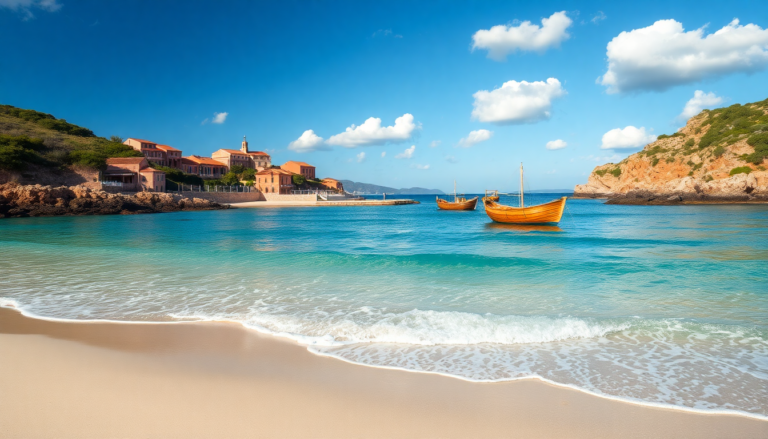Argomenti trattati
The serene fishing village of Isola Rossa in Sardinia captivates visitors with its unpretentious beauty and stunning coastal views. Nestled between Costa Paradiso and Castelsardo, this quaint locale offers a glimpse into a simpler way of life, framed by the breathtaking panorama of the Gulf of Asinara. With its vibrant colors and authentic nature, Isola Rossa is a hidden treasure waiting to be explored.
Getting to Isola Rossa
Reaching Isola Rossa is easier and more scenic than one might think. Travelers arriving from the mainland can choose to fly into Olbia Airport, located approximately 80 kilometers away, or Alghero Airport, which is about 88 kilometers from the village. For those opting for a sea journey, the most convenient entry point is Porto Torres. From there, visitors can continue by car or bus to Trinità d’Agultu, the municipality to which Isola Rossa belongs.
The route to Isola Rossa is marked by picturesque landscapes, making the journey as enjoyable as the destination itself. Once arrived, guests can immerse themselves in the local culture and history, where the echoes of the past still linger, notably through the presence of the Spanish tower that oversees the village.
Exploring the village and its surroundings
Isola Rossa is a place that surprises at every corner, rich in history and untouched by the overwhelming influx of tourists. The heart of the village features charming streets that invite leisurely strolls, dominated by the iconic Spanish tower dating back to the 16th century. The waterfront promenade offers stunning views of the coastline, where the turquoise waters meet the rocky shores.
For those seeking adventure, the local marina serves as a departure point for numerous excursions, including trips to La Maddalena and other islands in the archipelago. These trips reveal pristine beaches like Budelli and Spargi, well-known for their idyllic landscapes. Additionally, families can enjoy a nearby water park, providing fun activities for younger visitors.
Taking time to explore the surrounding areas, such as the village of Aggius, can enhance the experience, offering a deeper understanding of Sardinian culture and heritage.
Beaches of Isola Rossa
When it comes to breathtaking beaches, Isola Rossa does not disappoint. Among the most popular spots is Spiaggia Longa, easily accessible and ideal for families. Its soft sand, shallow waters, and a natural fountain add to its charm, making it a perfect day out for all ages.
Further along the coast lies La Marinedda, a spectacular bay framed by red cliffs and fragrant Mediterranean vegetation, attracting surf enthusiasts and those looking for a less crowded experience. For a more tranquil setting, Li Feruli offers a long, wild beach where one can unwind in peace.
Cala Sarraina emerges as a secret hideaway, nestled between rocks and crystal-clear waters, perfect for those dreaming of secluded coves. For unforgettable scenery, Tinnari presents a unique landscape devoid of sand but adorned with shells, red pebbles, and granite, creating a visual feast.
Another highlight is Li Cossi, boasting golden sand and vibrant emerald waters that invite visitors to dive deep into the sea. Last but not least, Cala Rossa offers a serene escape, enveloped by nature’s artistry, providing a tranquil setting for those seeking solitude.
Final thoughts on Isola Rossa
In summary, Isola Rossa is more than just a picturesque fishing village; it is a destination that offers a blend of natural beauty, rich history, and tranquility. Its stunning beaches and charming atmosphere make it an ideal spot for travelers looking to experience the authentic Sardinian way of life. Whether one is drawn by adventure, relaxation, or cultural exploration, Isola Rossa presents a unique experience that lingers in the memory long after leaving its shores.

